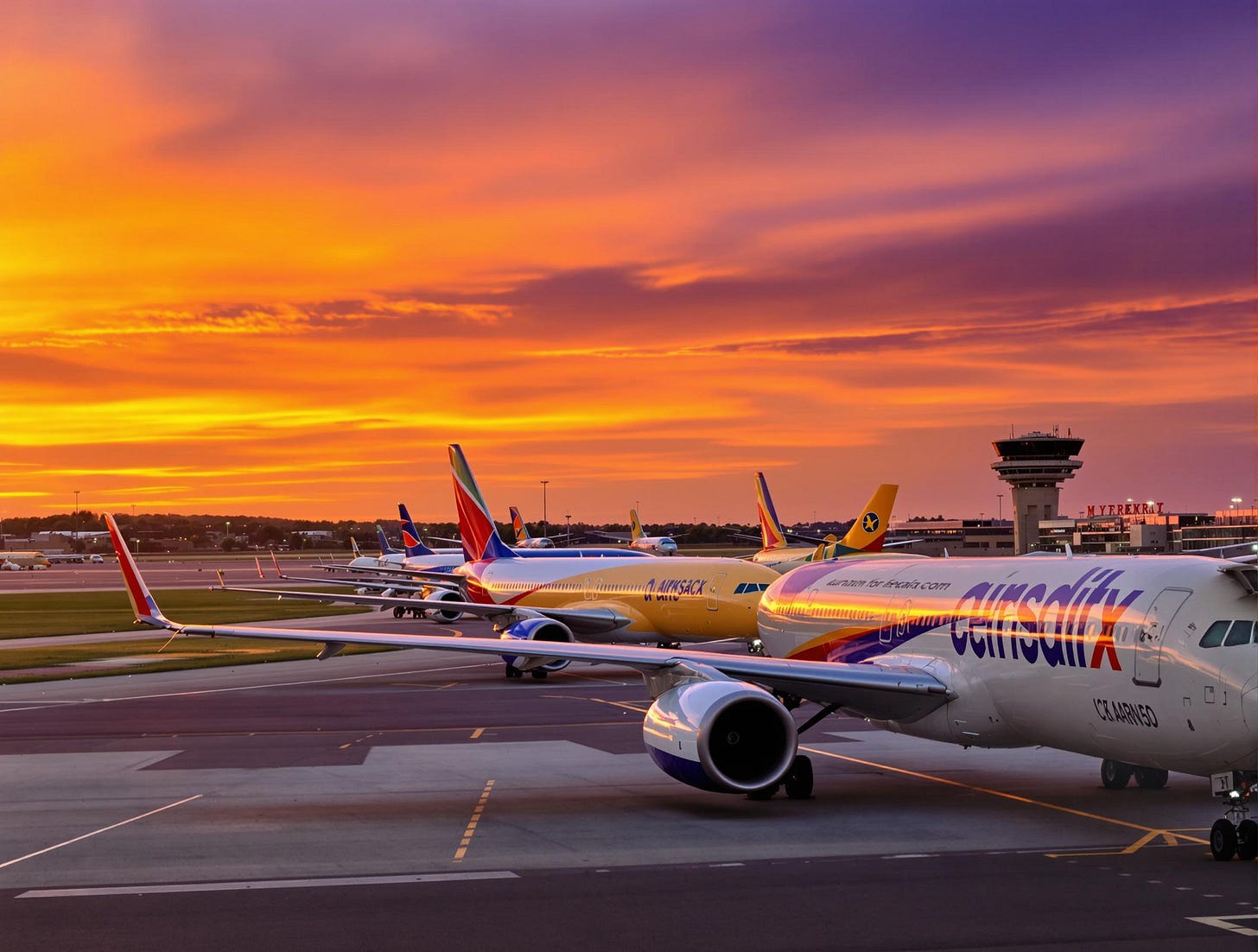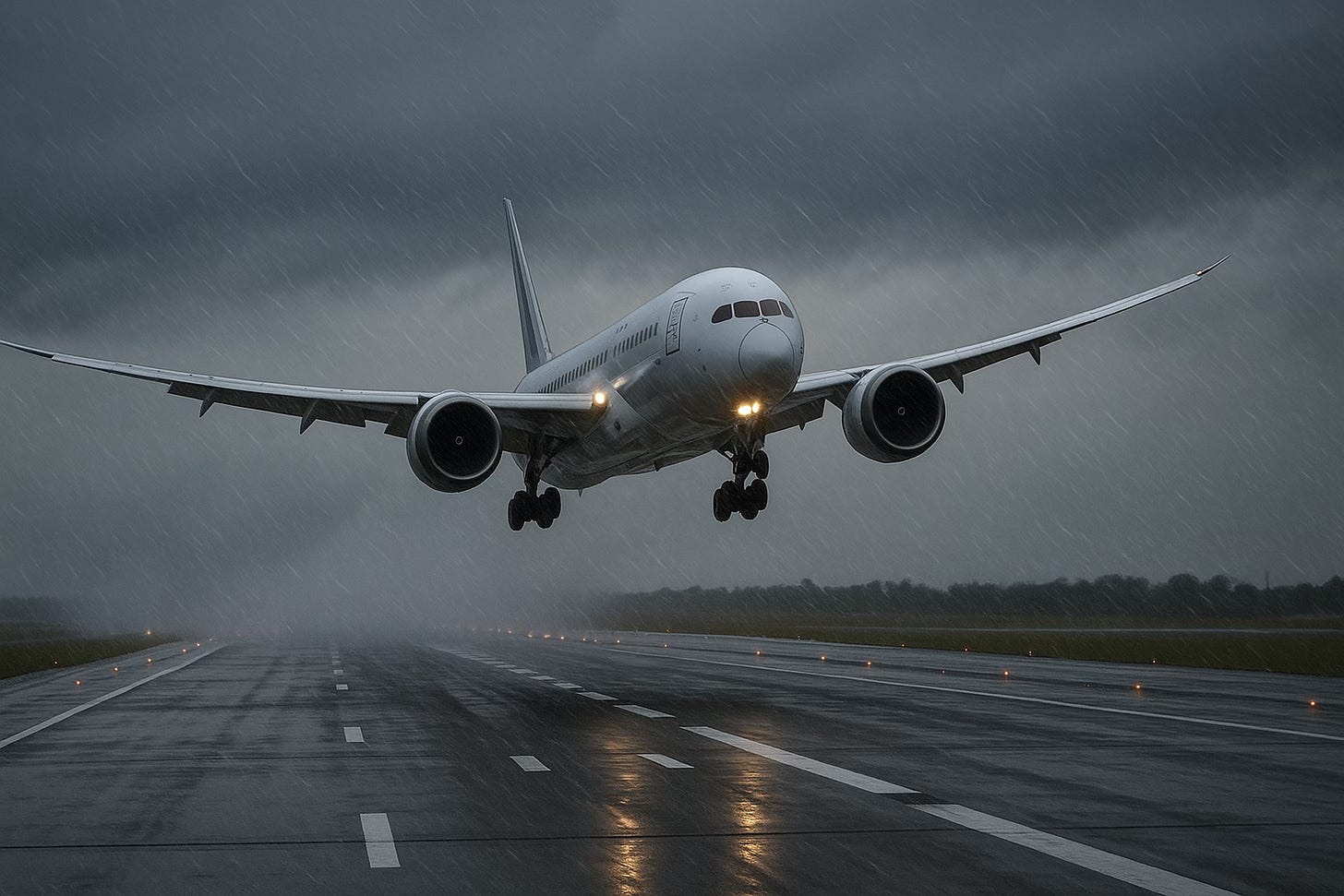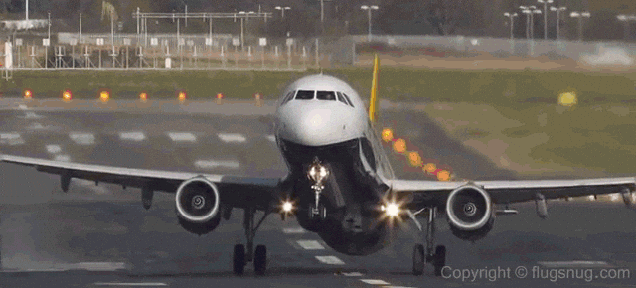🛫 From Seat 15F and 33C – This Week's Pilot Answers to Real Passenger Questions
This week questions from our coach class anxious flyers asking about the "what if"...
Welcome back! Each week, I answer real questions from nervous flyers because knowledge is the best antidote to aviation anxiety. From mysterious sounds to unexpected sensations, I'm here to explain what's really happening up there with clarity and calm.
👇 This Week's Questions:
💬 Question #1: "Why do we sometimes taxi for what feels like forever after landing?"
✈️ You've landed safely, but then spend 20+ minutes slowly crawling around the airport. It feels like torture when you just want to get off the plane, but there's a complex choreography happening on the ground.
The ground traffic reality:
Airport layout challenges:
Major airports are like cities with dozens of "roads" (taxiways)
Your gate might be miles from where you landed
We can't just drive straight there – we follow assigned taxi routes
Ground control directs every movement to prevent aircraft collisions
Why it takes so long:
Traffic jams on the ground:
Multiple aircraft are taxiing simultaneously
Larger aircraft need more space and move more slowly
We yield to aircraft on active runways and higher-priority traffic
Ground control sequences movements like a complex puzzle
Gate availability:
Your assigned gate might still have another aircraft
Ground crews need time to marshal the previous flight out
We sometimes get reassigned to different gates while taxiing
Jetbridge positioning and ground equipment take time
Ground operations choreography:
Baggage carts, fuel trucks, catering vehicles all sharing the same space
Each has right-of-way rules we must follow
Ground crews coordinate aircraft parking with millimeter precision
Multiple safety checks before we can shut down engines
What we're actually doing during long taxis:
Following ground control instructions precisely
Monitoring for other aircraft and ground vehicles
Coordinating with gate agents and ground crews
Running post-flight checklists and shutdown procedures
The safety aspect:
Ground collisions are actually more common than you'd think
Slow, methodical movement prevents accidents
Every taxi clearance is specific: "Taxi via Alpha, Bravo, hold short of runway 24L"
We can't deviate from assigned routes without new clearance
Why it feels worse than flying:
You're so close to your destination but can't get there
You can see the terminal but are moving at walking speed
No entertainment or service during taxi – just waiting
The psychological "almost there" factor makes it feel longer
Peak time factors:
Morning and evening rushes create ground congestion
Weather can slow ground operations significantly
International arrivals need specific gate areas
Customs and immigration facilities have limited capacity
The bottom line: Ground operations are incredibly complex, with dozens of aircraft, vehicles, and personnel coordinating every movement. That slow taxi isn't inefficiency – it's precision safety management on a massive scale.
💬 Question #2: "Why do flights sometimes go around instead of landing, and is it dangerous?"
✈️ Few things are more unsettling than being lined up for landing, then suddenly climbing back up into the sky. Your brain screams "something went wrong!" But here's the truth: go-arounds are actually evidence of excellent safety culture.
What a go-around actually is:
A normal procedure, not an emergency:
We practice go-arounds constantly in training
Every approach includes planning for a potential go-around
It's a routine maneuver, not a crisis response
Airlines track go-around rates as a positive safety metric
Why we execute go-arounds:
Runway safety:
Another aircraft slow to exit the runway
Ground vehicles or equipment on the runway
Wildlife on or near the runway (more common than you'd think)
We need guaranteed runway clearance before landing
Weather conditions:
Sudden wind shear or gusty conditions
Visibility drops below minimums during approach
Runway contamination from rain, snow, or ice
Better to go around than attempt a marginal landing
Approach not stabilized:
Aircraft not properly configured for landing
Approach speed too high or low
Not aligned with runway centerline
We have specific criteria – if we don't meet them, we go around
Air traffic control instructions:
Controller needs to sequence traffic differently
Spacing between aircraft not adequate
Runway change due to wind shift or operations needs
Sometimes ATC just needs to reset the sequence
The decision-making process:
Sterile cockpit environment:
Below certain altitudes, we focus solely on landing
Strict criteria determine if an approach continues
"When in doubt, go around" is drilled into every pilot
No pressure to "make it work" – safety comes first
What happens during a go-around:
Power increased to go-around setting (usually full power)
Aircraft pitched up for climb attitude
Landing gear and flaps adjusted for climb performance
We follow specific procedures practiced hundreds of times
Why it feels scary:
You were mentally prepared to land, not climb
The sudden power increase and climb feels urgent
You can see the runway "falling away" below
Your nervous system interprets "unexpected" as "dangerous"
The safety perspective:
Go-arounds prevent the vast majority of runway incursions
Much safer than attempting a questionable landing
Airlines prefer pilots who go around when in doubt
It's evidence of conservative, safety-first decision making
What happens next:
We're vectored around for another approach
Usually takes 5-10 minutes to set up again
Conditions often improve by the time we try again
Very rarely do we need a second go-around
The bottom line: A go-around means your pilots are following their training perfectly, prioritizing safety over schedule. It's not a failure – it's professional airmanship in action.
💬 Question #3: "Why do we sit on the tarmac for so long before takeoff sometimes?"
✈️ Nothing tests your patience like being stuck on the ground, engines off, watching other planes take off while you sit there. It feels like incompetence, but there's actually a sophisticated system managing every movement.
What's really happening during ground delays:
Air traffic flow management:
The entire national airspace is managed like a giant puzzle
Weather in Chicago can cause delays in Miami – it's all connected
Air traffic control balances departure and arrival flows continuously
Ground stops: FAA temporarily halts all departures to specific destinations due to weather, congestion, or airport issues
Your delay prevents much larger delays later in your flight
The domino effect of delays:
Weather impact:
Thunderstorms in major hubs affect flights nationwide
We can't just "fly around" weather at the system level
Ground delays prevent airborne holding, which burns more fuel
Better to wait on the ground than circle in the sky for hours
Airport capacity limitations:
Runways can only handle so many departures per hour
Peak travel times create natural bottlenecks
Construction or runway maintenance reduces capacity
International flights get priority slots during certain hours
Air traffic control coordination:
Your flight is assigned a specific departure time slot
This slot coordinates with traffic at your destination
Ensures proper spacing between aircraft in flight
Prevents dangerous congestion at altitude
Why we don't just take off and figure it out later:
Fuel efficiency:
Ground delays save thousands of gallons of fuel
Airborne holding is expensive and environmentally wasteful
Airlines prefer ground delays to air delays for cost reasons
Better for everyone when delays happen on the ground
Safety considerations:
Proper spacing between aircraft prevents mid-air conflicts
Ensures adequate separation during all phases of flight
Prevents overloading air traffic controllers
Reduces complexity for everyone in the system
What we're doing during the delay:
Monitoring the delay situation and updating estimates
Coordinating with dispatch and ground control
Managing cabin comfort (APU for air conditioning)
Communicating with flight attendants and passengers
The passenger experience challenge:
No clear end time creates anxiety
You can see other planes moving, making your delay feel personal
Being confined in a small space amplifies frustration
The "almost there" feeling makes it psychologically harder
Why some flights leave before you:
Different destinations have different traffic situations
Aircraft type affects departure sequencing
Some flights have higher priority (international connections, etc.)
Your delay slot might be longer due to destination traffic
The bigger picture:
Ground delays prevent much worse problems later
System-wide efficiency requires local inefficiency sometimes
Your 30-minute ground delay might prevent a 2-hour airborne delay
It's frustrating but evidence that the system is working
The bottom line: Ground delays aren't incompetence – they're evidence of a sophisticated traffic management system preventing much worse problems. It's the aviation equivalent of traffic lights keeping traffic flowing safely.
🛬 Final Thought:
Aviation anxiety often comes from the unknown – hearing sounds, feeling sensations, or experiencing procedures without understanding their purpose. Every system, every sound, and every sensation you experience has been analyzed, tested, and refined over decades of safe flight operations.
Your flight crew trains constantly for both normal operations and emergency scenarios. What feels unpredictable to you is highly predictable to us. We've seen it all, practiced it all, and are prepared for anything.
Remember: Commercial aviation is statistically the safest form of travel ever developed. Your job is to sit back and let us do what we've trained for.
Your job as a passenger? Sit back, relax, and trust that we've got this handled.
Got a question for next edition? Hit reply or drop it in the comments.
Pilot Nick
✈️ Lessons from the Flight Deck
📬 Get more cockpit insights and travel tips, subscribe free to Lessons From the Flight Deck for weekly updates that help you fly calm and confident or visit:
https://www.skycalm.org









I’ve been on two go arounds. The first was at Santa Maria County Airport in CA in a puddle jumper when there was a dog on the runway. The other was on a heavy flying into MSP when ATC left a plane on the runway. Uneventful after the go around.
As a former cabin crew, I absolutely loved this! Your way of explaining technical details with calm and clarity is such a gift, I can only imagine how reassuring this must be for nervous flyers. Reading your breakdowns brought me right back to my own crew days, except now I’m living the “flying with a toddler” version of aviation life ✈️ Please keep writing these, the aviation theme is one of my favorite corners of Substack, and it’s such a joy to see a pilot’s perspective alongside it.